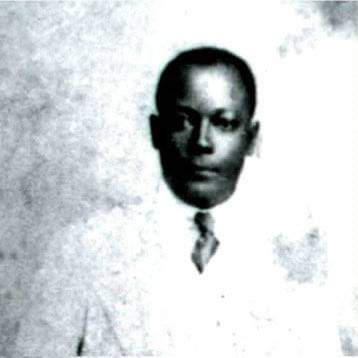You are using an out of date browser. It may not display this or other websites correctly.
You should upgrade or use an alternative browser.
You should upgrade or use an alternative browser.
Caribbean cuisine & foodways
- Thread starter get these nets
- Start date
More options
Who Replied?get these nets
Veteran

*president of Tempo network, Frederick Morton, appears as a guest
March 2024
Hot Ones: Caribbean Edition Brings the Heat and Showcases Regional Talent
The international sensation "Hot Ones," produced by Complex Media and owned by BuzzFeed, has taken the world by storm with its unique interview format. In a recent twist, the Caribbean has embraced this fiery format with "Hot Ones Caribbean Edition," now in its third season.
get these nets
Veteran

Building a $100 million brand (with Slutty Vegan's Pinky Cole) | Rapid Response
Jun 26, 2024
While many plant-based food brands have struggled recently, Pinky Cole’s fast food chain Slutty Vegan keeps growing, with new restaurants across the U.S. Pinky sits down with Rapid Response host Bob Safian to explain how she’s scaling the brand despite lawsuits, social media attacks, and a flurry of vegan restaurant competitor closures. Pinky also shares the story behind her recent keynote at Savannah State University, where she gifted the HBCU grads almost $9 million in entrepreneurial tools and training.
Chapters:
00:00 Introducing Pinky Cole & Slutty Vegan
00:29 How Slutty Vegan meets customers where they are
03:46 How much does Slutty Vegan need to scale?
06:24 The pain behind needing to constantly scale
09:35 Doing things her own way, unapologetically
12:44 Inside Pinky Cole’s $9 million donation of entrepreneurial service
15:48 What Pinky Cole has learned from Danny Meyer
17:28 Why Pinky Cole gave away equity in Slutty Vegan
19:08 What’s at stake for Pinky Cole at this moment?
get these nets
Veteran
get these nets
Veteran
Last edited:
get these nets
Veteran

July 10, 2024
From The Caribbean To New Orleans: Here's How These Popular Chefs Find Home In The Crescent City | Essence
Chefs from Haiti, St. Lucia, and Trinidad share how New Orleans feels like home and how they enjoy Caribbean-infused cuisine.
 www.essence.com
www.essence.com
get these nets
Veteran
get these nets
Veteran

The Jamaican Connection to Nigeria’s Famous Agege Bread

There is no question that bread plays a vital role in many cultures, and the variety of bread made from its few basic ingredients is remarkable. In Nigeria, the soft, sweet. square-loafed version known as Agege bread is a national staple, and it has a fascinating history and a strong Jamaican connection
Amos Stanley Wynter Shackleford was born in Charles Town, a Maroon community near Buff Bay, Portland, Jamaica in 1887. His father worked as a saddlemaker. When Shackleford was an elementary school student, his teacher was so impressed with Amos that he brought the young man with him when he moved to Manchester so he could continue his education. Shackleford began working for the Government Railway in 1903, and took the opportunity offered by the Nigerian Railway when it advertised for workers in Jamaica, leaving for West Africa in 1913. His interest in Nigeria was rooted in his Maroon connections and the early work of Marcus Garvey in Jamaica.
After a brief period in Jamaica in 1917, Shackleford returned to Lagos, Nigeria, becoming the head clerk at S Thomas and Co., a Nigerian-owned lumber company, in 1918. He married the daughter of a Jamaican Baptist missionary in 1921.
Successful bakery business
Shackleford and his wife established their own bakery business, which thrived in their small community, catering chiefly to the bread demands of the Agege people. His bread was delivered in vans and buses from the bakery in Ebute-meta to Agege during this time.
As he introduced new methods of production and marketing, the business expanded to other towns in Nigeria and the Gold Coast in the 1930s. He became known as the “The Bread King Of Nigeria,” and his bread was known as “Shackleford.” He retired and sold the business in 1950.
After Nigeria gained independence in 1960, the bakery business founded by Shackleford was suspended, but after some months, other bakeries were established in the country. One of the first was launched by an Agege local, Alhaji Ayokuunu, who used the dough machine introduced by Shackleford to prepare his bread. He hired hundreds of Agege residents and paid them to sell his bread on the streets. The bread then became known as “Agege Bread” at this time, and it became famous throughout the country and the region.
Last edited:
get these nets
Veteran
get these nets
Veteran
get these nets
Veteran


Banana Ketchup Should Be Everywhere
The sticky-sweet sauce popularized in the Philippines and Caribbean goes with everything
July 25, 2024
(excerpt)
It came to prominence in the Philippines in the 1930s, when a food technologist named Maria Y. Orosa created the recipe. Tired of her country’s dependence on imported goods, Orosa combined bananas native to the island with garlic, vinegar, sugar, spices, and red coloring to make a local version of the tomato-based condiment. During World War II, a businessman named Magdalo Francisco began mass-producing the ketchup. It’s been synonymous with Filipino cuisine ever since.
How does ketchup without tomatoes work? Beautifully. Banana ketchup’s fruit-forward notes are perfectly tempered with alliums and black pepper, creating a comfortable blanket of sweetness, heat, and tang. The flavor makes the condiment perfect for a multitude of uses: it’s found in dishes like breakfast silog, spaghetti, and adobo; on top of burgers and hotdogs; in marinades; and as a dipping sauce for just about anything. A staple in Filipino and other Southeast Asian households, its fire-engine-red bottle is a token of nostalgia for many. West Indian iterations often add curry powder and/or rum depending on regional preferences.
:format(webp)/cdn.vox-cdn.com/uploads/chorus_image/image/73481607/kerchup.0.png)
I treasure the Caribbean take on the condiment, especially the Baron brand version. The recipe is similar in composition to the original Filipino style, but leaves out the red coloring in favor of a naturally soft, yellow-brown hue. There’s no sugar added — the banana’s inherent sweetness is enough. The ketchup has a thick, velvety texture that makes it slow to leave the bottle but thoroughly worth the wait. Baron’s banana ketchup is produced in St. Lucia, where the fruit is carefully selected for quality before being processed and bottled.
get these nets
Veteran
get these nets
Veteran

July 2024

In 'Mad Love' cookbook, chef Devan Rajkumar shares a world of flavors
In the book, Rajkumar shares recipes that draw upon his Guyanese, Caribbean, West Indian heritage, his South Asian ancestry and his world travels.
get these nets
Veteran

Grandma and Me: Oxtails - Episode Two
Aug 2, 2024
MiMi is back and this time with Oxtails! Are we losing recipes and traditions? Who makes them better? Millennials or Boomers? Find out in this hilarious generational swap
get these nets
Veteran
Last edited:

